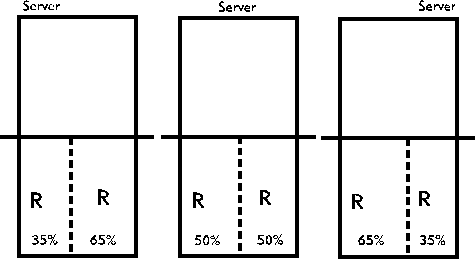How To Receive ServeIn beach doubles the server can serve from anywhere behind the endline and between the sidelines. This means that you have to change the areas that you are responsible for depending on where the serve is coming from. You will notice in the three diagrams below that whichever side of the court the server is serving from the player directly in front of him has less court to cover than the cross-court player.
This is due to the fact that it is much harder to cover the line if a server should serve straight down the line, because the ball is in the air for a much shorter length of time compared to the cross-court serve. Additionally, the cross-court serve results in the receiver facing the direction that he wants to pass the ball making it easier to get the pass to go where you want it to. When the server serves from the middle of the court, you would divide the court nearly 50-50, as shown in the middle diagram, but not very many servers will serve from that position. The serve that gives everyone the biggest problem, is the serve that splits the receivers and lands between them while both players look at one another & yell "YOURS". The best way to avoid this problem is to have the cross-court player be responsible for the serve down the middle and to make sure that he calls it loud and clear as early as possible. Get in the habit of, before every serve, saying either "My middle" or "Your middle" to make sure that you and your partner are on the same wave-length about who has the coverage in the middle. You can never remind each other of what you are both doing too often. Also, your partner will know that you are concentrating on what is happening on the court rather than day-dreaming about what you are going to have for lunch, if you get in the habit of reinforcing what is going to happen next before every play. You may find that it will help you to concentrate more, if you talk a little bit before each play. When the server is on the left or right side of the court you should split the court coverage 65%-35% as shown in the two outer diagrams above. These are only guidelines and will always need to be adapted depending on the individual server you are facing, and your playing partner, but I would guess that 95% of the time you will pretty much play the way the diagrams show. Remember, in doubles, the real trick is to keep it simple and consistent, just do the same thing over, and over, and over again. Make the same pass on every serve, no matter where you are, and you will win more games. If you sideout on every serve you receive, you can never lose! |
